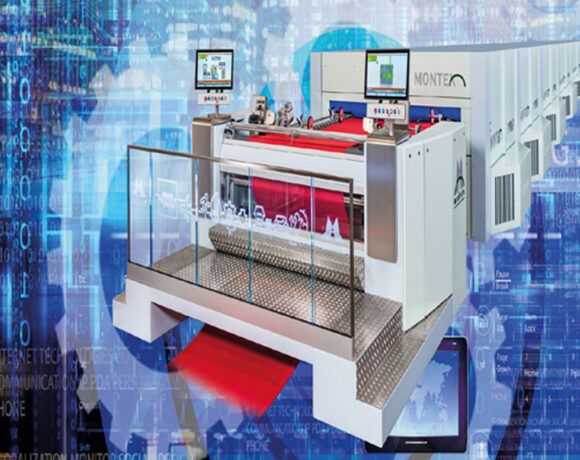Trützschler 12 Head Comber Offers 50% Higher Productivity

Trützschler has introduced an advanced technology comber, TCO 21XL which has 12 combing heads, instead of the standard eight heads, resulting in 50 percent more productivity, while also saving space.
“Two heads are better than one, so just imagine what 12 heads can do! That’s the simple but effective idea behind the TCO 21XL,” the German company observed.
Trützschler also added that increasing the number of combing heads by 50 percent makes it possible to increase productivity also by 50 percent, enabling productivity up to 150 kg per hour.
As a result, two TCO 21XL combers offer the same production capacity as three conventional combers.
“And that means companies that buy and operate two machines instead of three can achieve significant benefits in terms of their price-performance-ratio (cost/kg),” Trützschler stated.
“The costs of running the machines are broken down into 12 instead of eight heads, making the machine more cost-effective over its entire operating life,” the company explained.
Since the productivity is higher by 50 percent, the comber needs to be teamed up with Jumbo Cans, which can easily collect the additional output of the TCO 21XL, because they feature a 1,200 mm diameter.
“Whoever is planning a new spinning mill, knows that every square metre of space adds to the overall costs,” Trützschler said.
The new TCO 21XL comber offers huge benefits in this regard, because 25 percent less floor space is required to operate same number of combing heads.
This reduces the initial building costs, while also decreasing operating costs related to lighting, air conditioning and other overheads.
Trützschler has also updated its monitoring system by adding an Online Noil Monitoring function to the TCO 21XL.
“This means the Count Control and Online Noil Monitoring functions are now working together to give customers full control over the combing process and the final yarn quality,” Trützschler also said.
Variations in the noil are detected automatically and operators receive a warning if a significant change occurs and so, the noil percentage and final yarn quality stay consistent.
Material distinctions between different lots are also noticed in real-time, which empower operators to act quickly, enabling big savings in material costs, while also reducing workload of downstream process steps.














